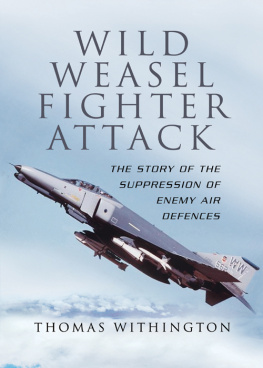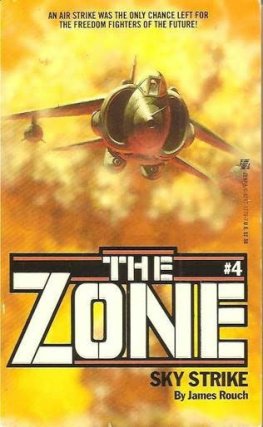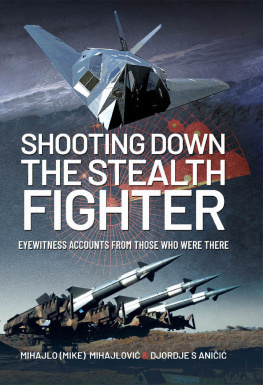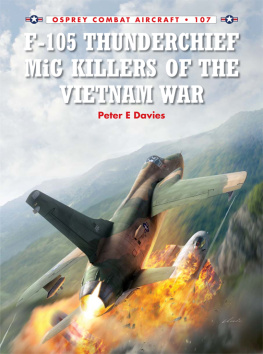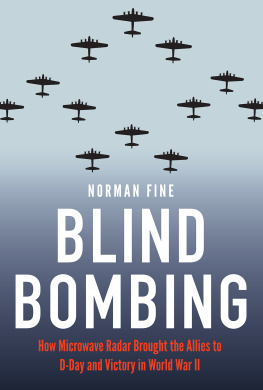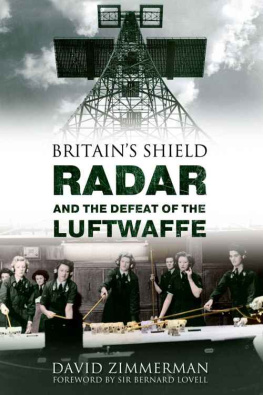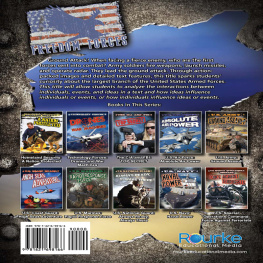
First published in Great Britain in 2008 by
Pen & Sword Aviation
an imprint of
Pen & Sword Books Ltd
47 Church Street
Barnsley
South Yorkshire
S70 2AS
Copyright Thomas Withington, 2008
ISBN 978 1 84415 668 9
ISBN 9781848849563 (epub)
ISBN 9781848849570 (prc)
The right of Thomas Withington to be identified as Author of this work has been asserted by him in accordance with the Copyright, Designs and Patents Act 1988.
A CIP catalogue record for this book is
available from the British Library.
All rights reserved. No part of this book may be reproduced or transmitted in any form or by any means, electronic or mechanical including photocopying, recording or by any information storage and retrieval system, without permission from the Publisher in writing.
Typeset in Palatino by
Phoenix Typesetting, Auldgirth, Dumfriesshire
Printed and bound in England by
CPI UK
Pen & Sword Books Ltd incorporates the imprints of Pen & Sword Aviation,
Pen & Sword Maritime, Pen & Sword Military, Wharncliffe Local History,
Pen & Sword Select, Pen & Sword Military Classics and Leo Cooper.
For a complete list of Pen & Sword titles please contact
PEN & SWORD BOOKS LIMITED
47 Church Street, Barnsley, South Yorkshire, S70 2AS, England
E-mail:
Website: www.pen-and-sword.co.uk
Contents
For Dr. Chris Smith and Dr. Ahron Bregman;
both mentors extraordinaire, great friends and suppliers of
inexhaustible wisdom, motivation and enthusiasm!
Acknowledgements
Researching a book which covers such a huge swathe of military aviation history is both a highly rewarding and, at times, frustrating business. That said, several individuals were kind enough to give me their time, suggestions and knowledge which helped me understand the complex nature of the air defence suppression mission. Dr. Gerald Gerry Stiles provided me with an excellent overview of the principles behind Suppression of Enemy Air Defence (SEAD) and the mission's history. I am grateful to Major General Len Le Roux at the Institute for Security Studies who kindly put me in touch with Brigadier General Richard Lord, formerly of the South African Air Force, from whom I gathered much information regarding South Africa's SEAD missions during the Angolan Wars. Similarly, Colonel Pierre Alain Antoine gave a very valuable account of French Air Force SEAD operations during the Chad civil war. Major Anthony Roberson of the United States Air Force supplied first-rate information on the SEAD effort during Operation Iraqi Freedom, while Tom Newdick gave me the benefit of his considerable knowledge of Soviet Air Force SEAD doctrine and platforms. Philippe Wodka-Gallien was an eleventh-hour hero for providing some fascinating information regarding French SEAD operations, pictures and also an infectious motivation with his love of military aviation. My thanks also to Mike Gibbons of Boeing who provided me with a superb overview of the EA-18G Growler programme. Captain Mark Gibson at the Public Affairs office at Shaw AFB helped immeasurably in sorting out interviews, while Sergeant Rebecca Danet at the National Media Outreach Center of the USAF also helped to a great extent in this regard. Darren Lake, Editor of Unmanned Vehicles Magazine, provided me with some very useful contacts.
Special thanks must go to Peter Coles, Editor of Pen and Sword military aviation, for believing in this project and also for being so patient when deadlines were outstripping my interview schedule! My friends and family were patient, enthusiastic and happy to hear me whittling on about surface-to-air missiles on a regular basis. Last but by no means least my partner Dr. Nathalie Rivere de Carles was a source of endless encouragement and motivation, patient in the extreme during my long hours at the computer, but with a keen eye and perceptive mind. There may be others who assisted me who I have omitted to thank and if that is so, please accept my humble apologies and deep gratitude. Needless to say, the responsibility for any errors or omissions lies solely with the author.
Thomas Withington,
South-west France.
CHAPTER ONE
The Mission Defined
It would be an exaggeration to say that the mission is suicidal, yet an understatement to say that it is dangerous. However, in almost seventy years, the effort to suppress and destroy enemy air defences has pitted the determined wit and cunning of the combat pilot against the dogged tenacity of the air defender manning either Anti-Aircraft Artillery (AAA) weapons, Surface-to-Air Missiles (SAMs) or gazing at radar; whether as part of an Integrated Air Defence System (IADS) or as part of an individual battery.
For as long aircraft have been used for military purposes there have been efforts to frustrate and defeat their desires. In peace-time, pilots face dangers from the whims of the weather, the slack hand of inadequate maintenance and design, or the simple yet deadly risk of human frailty; all of which can lead to accidents. In wartime, these dangers are in addition to those of the gun and the missile whose operators seek, with all intent and purpose, to down the aircraft that is bringing ordnance to a target, performing a reconnaissance sortie or a Combat Air Patrol (CAP).
The way to defeat the latter risk is to take the war directly to the defenders, to make anti-aircraft defences a key target of airpower and also, in some instances, land forces. Thus, the Suppression of Enemy Air Defence (SEAD) mission has evolved from World War II as an adjunct to a larger air or ground operation, to a complicated mission in its own right encompassing specialist aircraft and munitions, Electronic Intelligence (ELINT) and ground forces in a carefully scripted, destructive concerto aimed at wiping out the air defences of an adversary with decisive blows.
Always a good starting point for definitions and descriptions is the United States Department of Defense (DoD) Dictionary of Military Terms which defines SEAD as: That activity which neutralizes, destroys, or temporarily degrades surface-based enemy air defenses by destructive and/or disruptive means. This definition is corroborated by the Royal Australian Air Force's Air Power Development Centre's Air Power Terminology dictionary which reinforces the importance of the mission, while also stressing the result that successful SEAD operations can have on the conduct of wider air operations: The suppression of enemy air defences is a major role in the application of air power. It is the neutralisation, destruction or temporary degradation of enemy air defence systems so that aircraft have the freedom of action to complete their mission without interference from ground-based anti-aircraft systems. So there we have it. The importance of the mission defined; to allow other aircraft the freedom of action to roam the skies unhindered by the radar that may see them and the communications links that may transmit information on their whereabouts and the weaponry that might shoot them down. In short, the SEAD mission is as integral to establishing air superiority as CAPs of fighter aircraft looking for and attacking their opposite numbers. They are indivisible, one and the same in sanitizing the skies.
The importance of the mission also transcends the air force. If an army on the ground or the warship at sea is to obtain aerial reconnaissance data on potential targets or to benefit from the provision of Close Air Support (CAS), then the aircraft which provide these capabilities must be able to do so with the minimum of harassment from the ground.
Up until the American withdrawal from the Vietnam War in 1975 the SEAD mission had primarily been the preserve of specialist aircraft that were outfitted at first with cannon, and then rockets and missiles, together with sophisticated radar-seeking electronics and Electronic Counter Measures (ECMs). However, since then the SEAD mission has evolved to encompass all elements of a modern armed force. Certainly, the specialist platforms dedicated to SEAD still exist and are vitally important, the United States Air Force (USAF) F-16CJ Wild Weasels and their accompanying AGM-88 High-speed Anti Radiation Missiles (HARMs) being two examples. However, these aircraft are joined by sophisticated ECM-equipped planes such as the US Navy (USN) and US Marine Corps (USMC) EA-6B Prowler aircraft which can blast the radar and communications net of an IADS with torrents of hostile electrons rendering the eyes and ears of the system deaf and blind. In addition, conventional dumb bombs, rockets and gunfire can all find their way onto a radar or SAM site. Attack helicopters can unleash their not-inconsiderable cannon, rockets and air-to-surface missiles on radar, SAMs and hardened command centres. Meanwhile, artillery can take apart similar targets, as can raiding parties of Special Operations Forces (SOF) commandos. Even long-range heavy bombers can play their part in decimating hardened IADS Command and Control (C2) centres. For example, the attack aircraft that strafes a convoy of vehicles carrying Man-Portable Air Defence System (MANPADS) hand-held launchers illicitly across a border into a neighbouring country gripped by insurgency is arguably playing as useful a role in the SEAD operation as a Wild Weasel sending an AGM-88 into an IS-91 Straight Flush ZRK-SD Kub 3M9 (NATO codename SA-6 Gainful) SAM fire-control radar.
Next page
